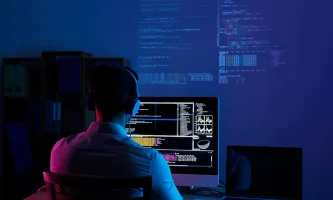Measurement And Monitoring Solution Of Oil Storage Tank

Just recently, there were only a few ways of measuring the levels of oil storage tanks, such as visual checks and by use of a dipstick. Nevertheless, these procedures were slow, inaccurate, and not in real-time. The era has changed with the advent of liquid-level transmitters to monitor oil storage tanks.
Oil storage tanks have been hugely impacted by the emergence of liquid-level transmitters. These devices present real-time data that is both accurate and dependable. Furthermore, it has become possible to remotely determine whether oil levels are appropriate as well as detect leakage points. They have increased efficiency in operations, minimized human errors, and enhanced safety at oil storage facilities.
Advise Measuring And Monitoring Solutions For Oil Storage Tanks
There are many considerations you need to make before deciding on which level sensor to use for your tank filled with petroleum fuel: accuracy, reliability, longevity, and conformance with industry standards. But let’s move on; how do you optimize them?
1.Ensure Correct Installation: However, when one wants to maximize the performance over these devices as well as increase the accuracy levels, it is good to strictly adhere to what the manufacturers say during installation.
2.Calibration and Maintenance: Regular calibration of the liquid level transmitter is done to ensure accuracy is maintained. Also, routine maintenance checks are carried out to ascertain that the device is functioning smoothly and prevent potential issues.
3.Monitoring System Integration: Integrate the liquid-level transmitter with a comprehensive monitoring system for real-time data monitoring, alarms, and alerts. This will enable proactive decision-making, prevention maintenance, and enhanced general efficiency.
4. Consider External Factors: While choosing a liquid-level transmitter, consider external factors like temperature, pressure, environmental conditions, and hazardous zone requirements. Ensure it can withstand and operate effectively within your oil storage facility’s specific conditions.
Solutions For Measuring And Monitoring Of Oil Storage Tank
Now, let us discuss three highly recommended liquid-level transmitters for measuring and monitoring solutions for oil storage tanks:
MPM489W Liquid Level Transmitter
The Microsensor MPM489W Level Transmitter is a highly advanced and adaptable instrument designed for several industrial applications. It has an integrated structure which means no further adjustments are needed, streamlining field service and automation control.
The transmitter has certifications for intrinsic safety type (Ex ia IIC T6 Ga) and explosion-proof type (Ex d IIC T6 Gb) to ensure safe operation in dangerous environments.
The MPM489W is a fully sealed submersible design that makes it durable and hence suitable for use in high strength stainless steel housing with liquids compatible with the same. It also ensures long-term sensor service given its tight seal between the cable and housing.
Additionally, it has a dedicated circuit together with a piezoresistive sensing element that is known for their stability and reliability thus contributing to product accuracy and repeatable performance.
The transmitter covers an extensive measurement range from 0mH2O to 200mH2O, with overpressure protection up to 2 times FS. Accuracy specifications are quite impressive as they range from ±1%FS at lower pressure values (0mH2O – 1mH2O) to ±0.25%FS at higher pressure values (10mH2O – 200 mH2O). Also, it meets the test standard of GB/T 17614.1-2015/IEC60770-1:2010, which reflects its commitment to quality.
The operating temperature range of the MPM489W allows it to be used in different environments: -10℃ to 60℃ (intrinsic safe type), -20℃ to 70℃ (cable material: PE, PVC) and –20℃ to 80℃ (cable material: PUR). It has a storage temperature range of -20℃ to 85℃, a vibration resistance rating of 10g(55Hz~2000Hz), and a shock resistance rating of 100g for an impulse duration of 11ms.
This MPM489W has an IP68 protection rating that ensures its resilience against dust and water ingress, making it suitable for use in challenging industrial environments. The thermal drift specifications are outstanding, with small values implying minimal influence on accuracy at different temperatures.
It also has various output signal options like 4mA20mA, 1V5V DC, 0V5V DC, 0V10V DC, which can be used in a wider range of control systems.
Read Also: The Evolution Of IT: Understanding The Role Of Managed Support In London
MPM426W Series Submersible Level Transmitters
The MPM426W series submersible level transmitters are designed to be versatile and reliable for various applications by incorporating a sturdy construction and extensive features. The transmitters come with a fully welded body that guarantees their endurance in severe working conditions, including those requiring high resistance to wear and tear, or even explosive zones.
They also consume less power, thus leading to energy saving while having a large temperature range of operation which enables them to adapt to different environmental conditions.
What makes these transmitters unique is their ability to measure levels in diverse categories of storage tanks such as processing oils like gasoline and diesel among other chemicals like methanol, ethanol, DEF, etc. This feature is complemented by integrated temperature measurement which makes them appropriate for situations where varying degrees of heat are important. In addition, there are multiple output signals and a magnetic end cap for movable tanks that make them much more flexible and user-friendly.
The MPM426W series accuracy floor is well pronounced going by the pressure types/ range which ranges from ±0.25%FS TO ±1%FS. They are fitted with IP68 rated protection making them resistant against water and dust hence they can be used as submersibles. Moreover, due to their approval for use in hazardous areas, it is clear that they prioritize safety.
In general, the MPM426W series is a reliable and versatile solution for level monitoring across industries as well as its precision, durability and adaptability in harsh operational environments.
Conclusion
So that’s all about the measurement and monitoring solution of the oil storage tank. Anything involving fluids or oils needs to be taken seriously. That is, in terms of safety, efficiency, and reliability.
All the transmitters we discussed above are key to enhancing these aspects. Even so, they work best when used in consideration of the tips discussed earlier.
Read Also:













